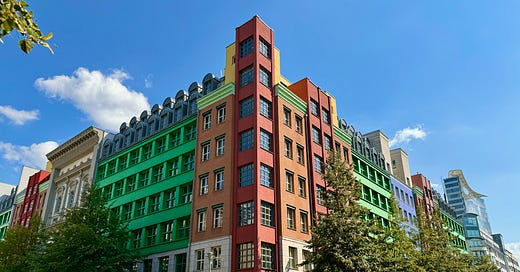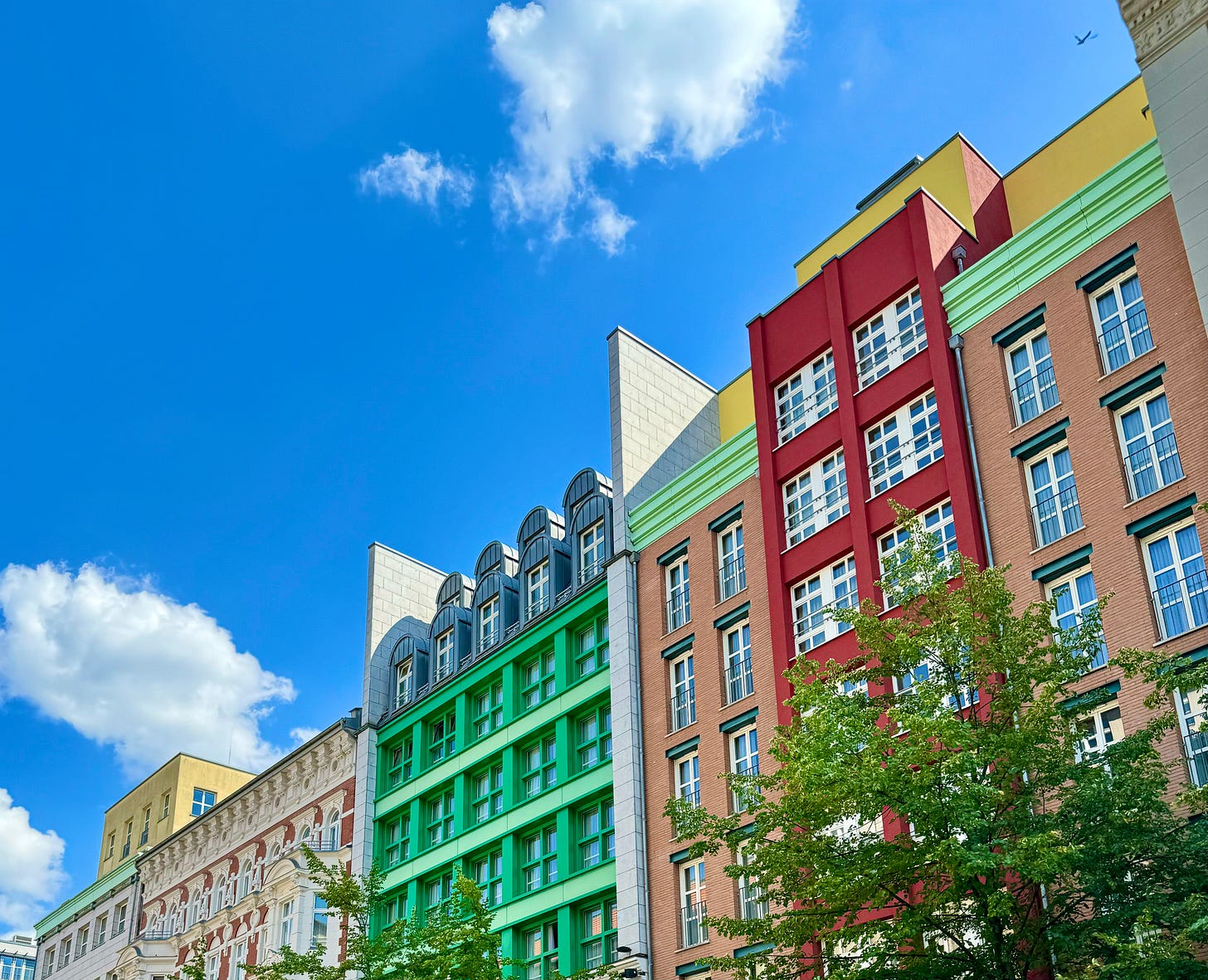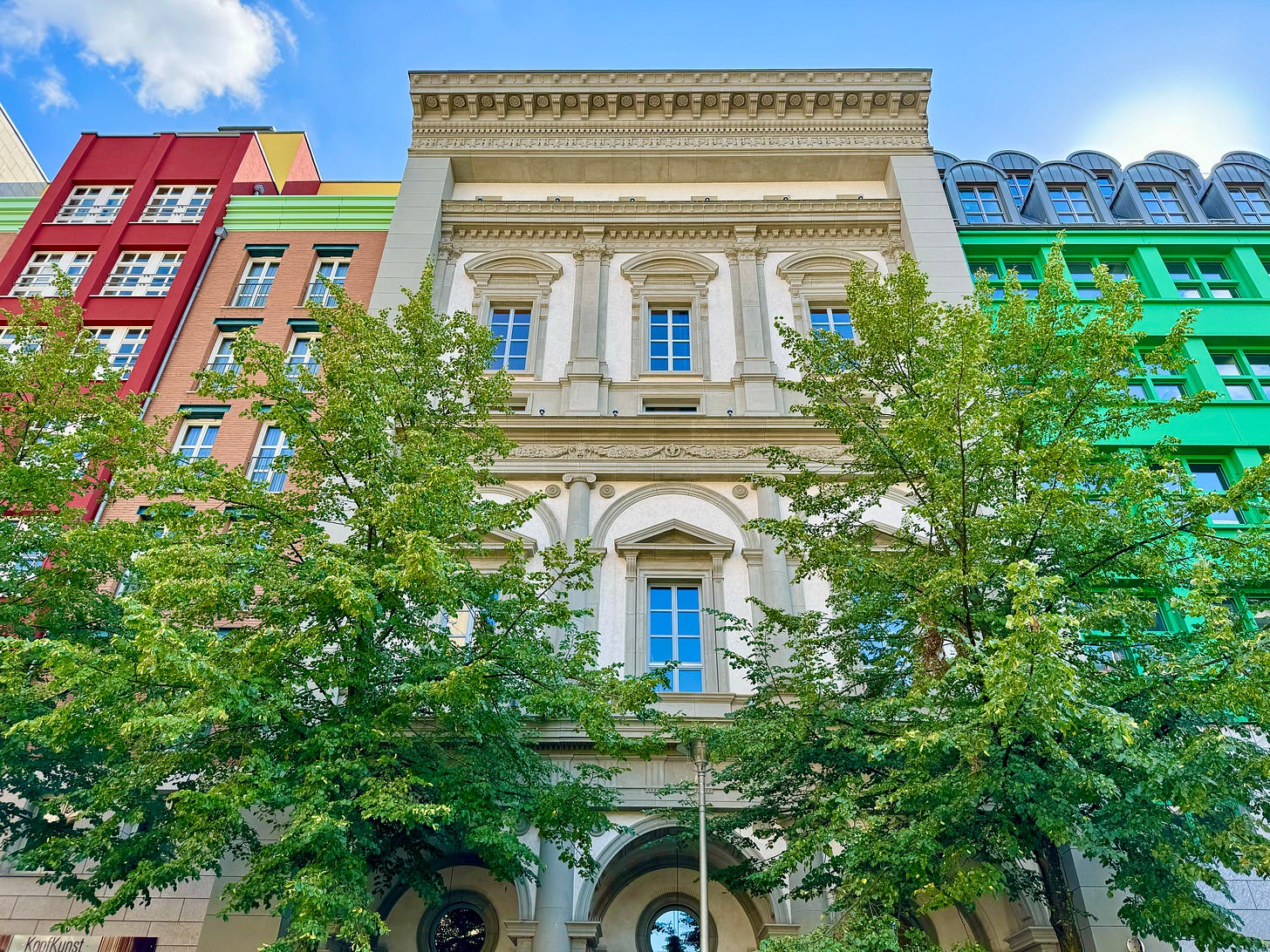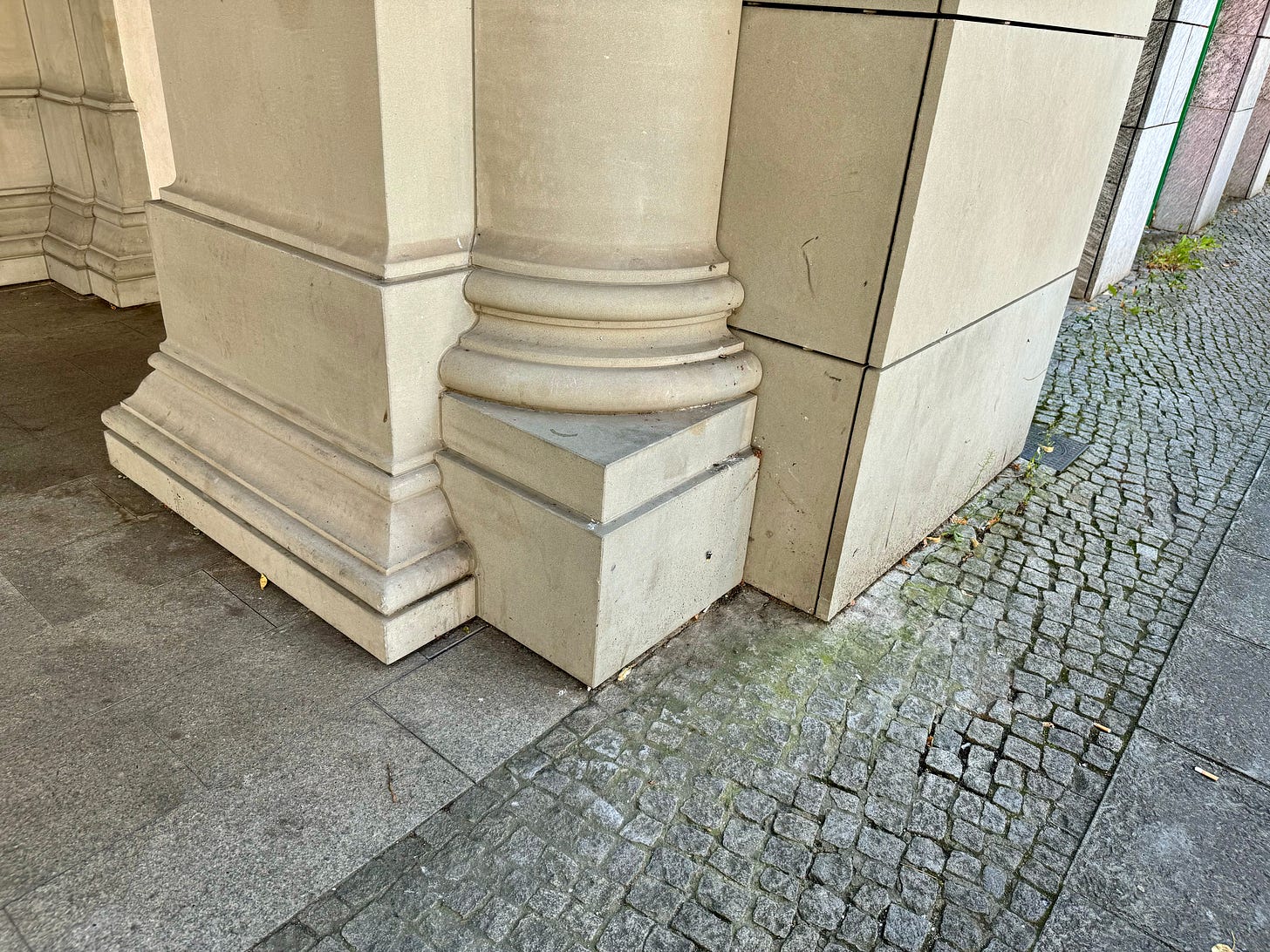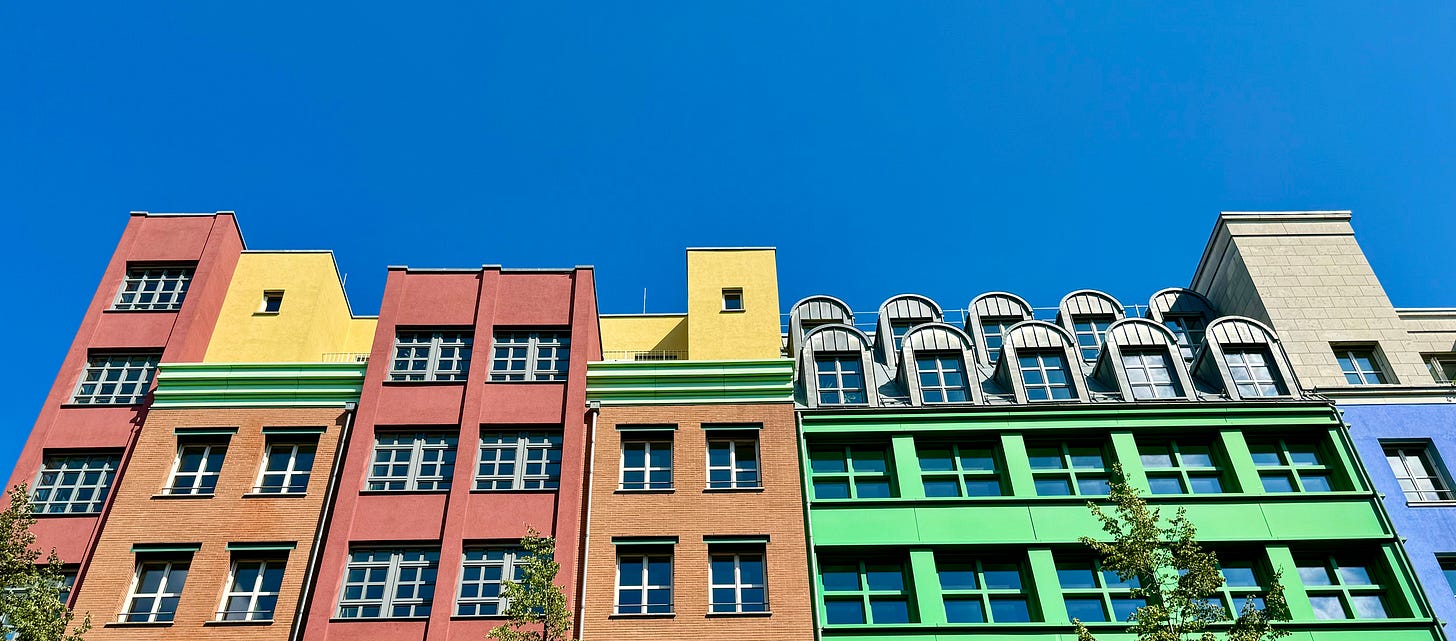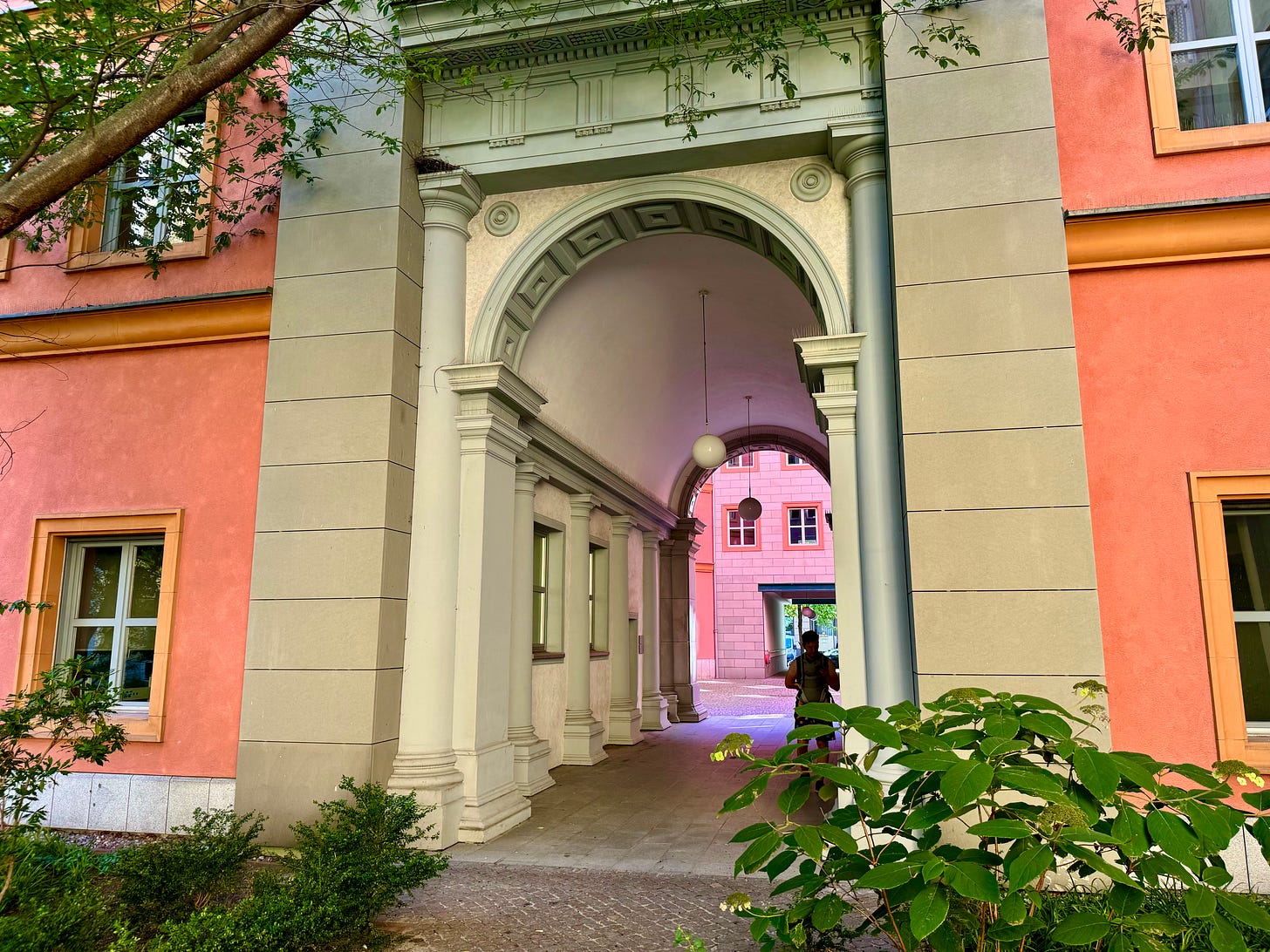I drove past a funky looking block of buildings every day for two years.
Its colourful and unnecessarily wacky facades both intrigued and annoyed me.
I just couldn’t take my eyes off the building’s cornucopia of architectural styles and bold primary colours.
It was a daily dose of pure madness for the eye.
And to be honest, as a motorist, it was downright distracting (I’m surprised there isn’t a German law against this kind of thing).
One day, roughly two years ago, I was working with a client developing a lighting concept for their office space.
Little I did know that the office was in that very building I’d been goggling for the past years.
As I subsequently found out, the building, called Quartier Schützenstraße, was designed and built by Italian architect Aldo Rossi in the mid 90s.
This came as a pleasant surprise. I’d read about Aldo Rossi and his controversial brand of postmodernism. The Teatro del Mondo construction from the Venice Architectural Biennale in 1980 being one example.
And I also knew him for his iconic Alessi Espresso Mokka. But I had no idea he’d designed a building in Berlin (it turns out he also did others too).

Impressed by the pedigree of the architect, but still unsure as to whether I liked the building or not, I entered the building full of interest and expectation.
Unfortunately, however, first impressions were terrible.
The office space was dingy, dark and cramped.
Whereas the exterior suggested fun and games, the interior was all drab and depressing - complete with low ceilings and oppressive atmosphere.
This certainly wasn’t helped by the fact that all windows looked into a lightless courtyard - a true flavour of Berlin 1900.
Generally, the whole experience felt a bit dated.
After the meeting, I walked around the complex and examined many little idiosyncrasies, most of which made absolutely no sense whatsoever.
The 'renaissance' stonework, for one.
Despite being genuine stone, the columns on the facade somehow had more of an appearance of plastic paneling.
Furthermore, there were noticeable gaps between the stone pillars and the pavement. Bad workmanship - or intentional design detail?
The garish colours and materials of the facades - deliberately provoking?
In fact, I noticed that the facade even included a section of a neoclassical building (a copy of a section of Michelangelo’s Renaissance Palazzo Farnese in Rome). Why?
On top of that, certain sections of the building are partitioned by a rather unsightly protruding section of wall - a tasteless nod to its geographical position on a section of no mans land on the former Berlin Wall?
‘What was going through the architect’s mind?’ I thought to myself.
As I left the building, I couldn’t stop thinking about how unfathomable the place was.
After a little research about the building online, it was clear that its eccentricity has accrued more than its fair share of haters over the years.
For example, the Berliner Tagespiegel mused that the building wasn’t up to the standards of Rossi’s Italian projects.
The ‘Architecture in Berlin’ blog called it the last dying gasp of postmodern architecture.
And, given my own experience within the building, I couldn’t really add anything positive.
But as I continued to gather more criticism about the building, a strange thing happened:
I began to like it.
The fact that the stone has a plastic look to it - that’s actually quite interesting.
The madness of the facades - this actually makes for an interesting visual in an otherwise drab part of town!
The hinterhof - an interesting reference to the history of the city’s turn of the century architecture?
The fact the building screams late 80s / early 90s - in a weird way, I’m starting to like that dated look!
All these little things mean that the building really does leave a lasting impression - whether you’re a fan of its postmodern credentials or not.
Rossi’s building is so silly, and so mental, it’s actually quite refreshing.
It’s a great antidote to the ubiquitous glass facades which are cropping up all over our city centres all over the world. Like Potsdamer Platz round the corner, for instance.
And like any interesting character, its eccentricities and its flaws make it quite relatable.
Although I don’t drive past daily anymore, I do sometimes go and take a detour to see the building if I’m in the area. And it always brings a smile to my face. It’s important to hold on to these little eccentricities in our urban spaces.

